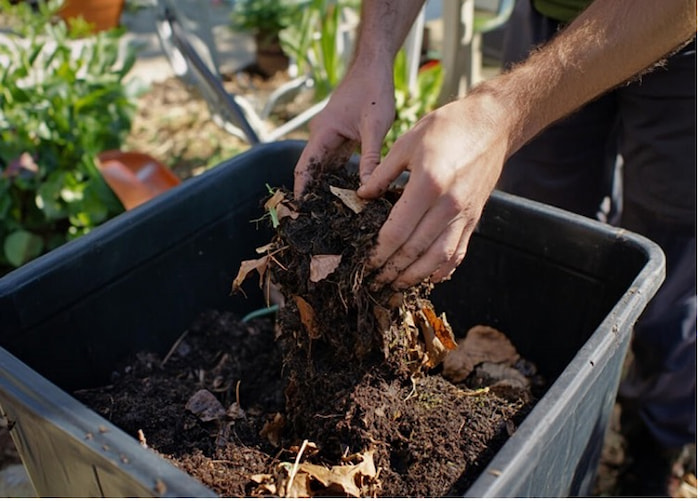As winter approaches, your polytunnel doesn't have to turn into an icebox. Learn how to keep your garden thriving with warmth without burning a hole in your pocket.
Whilst a polytunnel can provide a warm environment so that you can easily grow crops in the UK, many gardeners do not realise that polytunnels cannot totally withstand winter’s cold, harsh touch. But is it possible to heat a polytunnel in winter on a budget with energy-efficient options? In this article, we will provide a series of ways in which you can efficiently heat a polytunnel, from using natural heat, to solar energy, horticultural fleeces, bubble wrap and more.
Key Considerations
- Understand the basics of how to heat a polytunnel in winter using sustainable methods.
- Discover cost-effective strategies including horticultural bubble wrap and heat sinks.
- Try out environmental solutions such as wind turbines and solar heating.
- Explore DIY solutions that keep temperatures stable without electricity.
How to Heat a Polytunnel
Understanding how to heat a polytunnel efficiently during winter is vital for gardeners who wish to extend their growing season and ensure that their crops can withstand the winter in a sustainable growing environment. Effective heating not only safeguards plants from cold but also promotes a thriving environment.
Here’s how to maintain warmth in your polytunnel without incurring excessive costs.
How Much Does it Cost to Heat a Polytunnel?
The expense varies depending on the heating method chosen. Simple strategies can be surprisingly effective and economical. There are mainly two common ways in which you can heat a polytunnel:
1. Using daytime heat
2. Installing a heating system in or around the polytunnel
In the UK, the sun is still capable of heating a polytunnel up to 30°C. However, this can vary depending on how cold it is outside, particularly in the winter.
11 Heating Solutions for Your Polytunnel
When considering how to heat a polytunnel, each natural solution has its pros and cons for you to consider:
1. Draft Proofing
One of the initial steps to heat a polytunnel involves draft proofing. In many polytunnels, doors equipped with net panels aid summer ventilation but become conduits for heat to escape during winter. This can be said for both hinged and sliding door installations.
Sealing these panels with plastic and installing draft excluders around door frames can significantly help retain heat. However, while these measures prevent heat from escaping, they often provide minimal warmth by themselves.
2. Horticultural Bubble Wrap
This specific type of bubble wrap is designed to retain heat efficiently and is more durable and UV-resistant than regular bubble wrap. It can be used to line the walls and even insulate pots within the polytunnel, providing a cost-effective way to maintain warmth.
3. Segmentation with Hoops and Cloches
By dividing the polytunnel into smaller sections, you can reduce the volume of air that needs heating, making smaller heat sources more effective. Using cloches or small hoop houses inside the polytunnel can create microclimates that are easier to heat.

4. Candle Heating
A surprisingly effective method for small spaces, candles can raise the temperature in their immediate vicinity. Safety is crucial, so ensure candles are securely placed to prevent any fire hazard. Using candles may seem impractical, especially if you have commercial polytunnels, but remember how candles can be used to heat rooms and make them more cosy at Christmas too.

5. Solar Heating
To improve the sustainability of heating your polytunnel, consider shifting to solar heating, and use heat and sunlight from the sun to your advantage.
Solar panels are an excellent option for generating clean energy. They can be installed near or on your polytunnel to provide sufficient power for both heating and lighting. The installation should be positioned to maximise sunlight exposure throughout the year.

6. Wind Energy
If your location is vulnerable to wind, setting up a small wind turbine can be another effective way to harness renewable energy. The turbine could be installed close to the polytunnel, ensuring that it captures enough wind to generate power efficiently.

7. Composting
Heating your polytunnel using compost is an eco-friendly and sustainable method that harnesses natural biological processes. Here's how to implement this simple technique:
- Location: Identify a suitable area within your polytunnel where you can place your compost. This could be directly on the ground or in a contained area such as a large compost bin.
- Prepare the Compost Mix: Create your compost pile by layering brown materials like dried leaves and straw with green materials like kitchen scraps and garden clippings. The ideal ratio is roughly two parts brown to one part green. Moisten the pile slightly to encourage decomposition.
- Position the Compost: Depending on the size of your polytunnel, you can place the compost directly beneath planting tables or along walkways where it won't interfere with plant growth. The heat rising from the decomposing compost will help warm the surrounding area.
- Maintenance: As the compost breaks down, it generates heat, which can help maintain a warmer temperature inside the polytunnel. Use a thermometer to monitor the heat levels, especially during the coldest months.
- Adjust: Stir the compost occasionally to keep the decomposition process active and manage the heat output. Add more green materials if the compost begins to cool down to reactivate the heating process.

8. Double Poly Insulation with a Mini Polytunnel
If you have a large polytunnel and are unsure of whether all of your crops will receive an ample amount of heat and warmth, consider using a mini polytunnel for your most vulnerable crops.
Setting this up within the larger structure will allow your crops to receive more warmth and care during a frost.

9. Stone Methods
Stones absorb heat during the day and release it slowly at night, smoothing out temperature fluctuations. Collect medium to large stones, which you may find scattered around your garden. If not, you may be able to gather from a beach or local park.
Distribute these stones around your polytunnel, using approximately 36kg of stones per square foot. These stones will absorb heat from the sunlight during the day and gradually release it overnight, helping to maintain a slightly warmer temperature inside the polytunnel.

10. Heat Sinks with Water Barrels
Painting barrels black and filling them with water can turn them into effective heat sinks. Positioned strategically, they absorb solar energy during the day and release it at night, helping to keep the environment warmer.
11. Organic Heat from Hotbeds
A final method on how to heat a polytunnel for the best energy efficiency, which also enriches your soil, is the use of hotbeds.
Hotbeds use the heat generated by decomposing organic materials, such as manure, to increase soil temperature. Not only do they provide a steady source of heat, but they also transform into rich compost over time, aiding soil fertility.
In conclusion, each of these methods offers a way to keep your polytunnel warm during colder months without excessive energy use. By combining these techniques, you can create an efficient heating system tailored to your specific needs and conditions, ensuring that your plants thrive even in winter. Ultimately, it's about choosing which option is most economical for your budget as well as the size of your polytunnel.
Unsure of what other ways to use your polytunnel for? Try these interior polytunnel ideas.
This article was sponsored by First Tunnels
FAQ
Is it necessary to heat a polytunnel during winter?
Whether you need to heat your polytunnel during the winter depends on what you are growing. Heat-loving plants will require a stable, warmer environment, whereas cold-hardy plants may not need additional heat.
What are the safety considerations when heating a polytunnel?
Key safety considerations include ensuring that any heating equipment used is suitable for indoor use and well-maintained. Keep flammable materials away from heat sources, and ensure that your heating setup has adequate ventilation to prevent the build-up of harmful gases.
Can I use solar power to heat my polytunnel?
Yes, solar power can be an efficient way to heat a polytunnel, especially if combined with thermal mass, like water barrels, to store heat. Solar air or water heaters can provide sufficient heat during sunny days and reduce dependency on electric or fossil fuel-based heating systems.
Sources
Waddington, E., (2024) 11 DIY Interior Polytunnel Ideas: Unusual Ways to Use Your Polytunnel. First Tunnels. [online] Available at: https://blog.firsttunnels.co.uk/interior-polytunnel-ideas/ [accessed 17/10/2024]
Written by Sean Barker from First Tunnels.
Sean Barker is the Managing Director of First Tunnels and a passionate advocate for sustainable gardening.
With over 30 years of experience in the gardening industry, Sean has dedicated himself to helping gardeners across the UK maximise their growing potential through the effective use of polytunnels. His blog offers a wealth of practical tips, expert advice, and innovative solutions for maintaining and optimising polytunnels, ensuring gardeners can enjoy bountiful harvests all year round. Sean can often be found experimenting with new growing techniques in his own polytunnel, always eager to share his findings with fellow enthusiasts.


